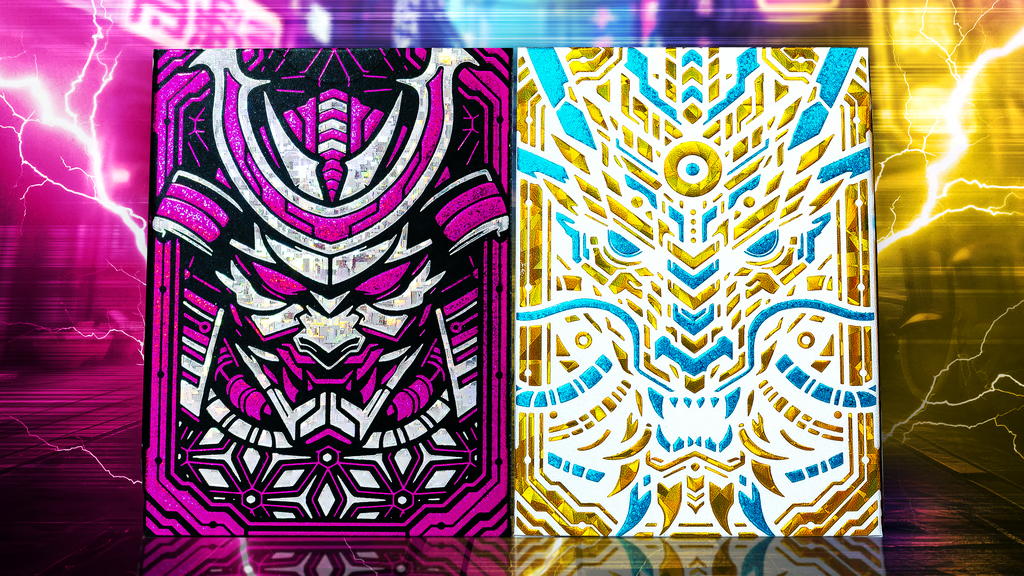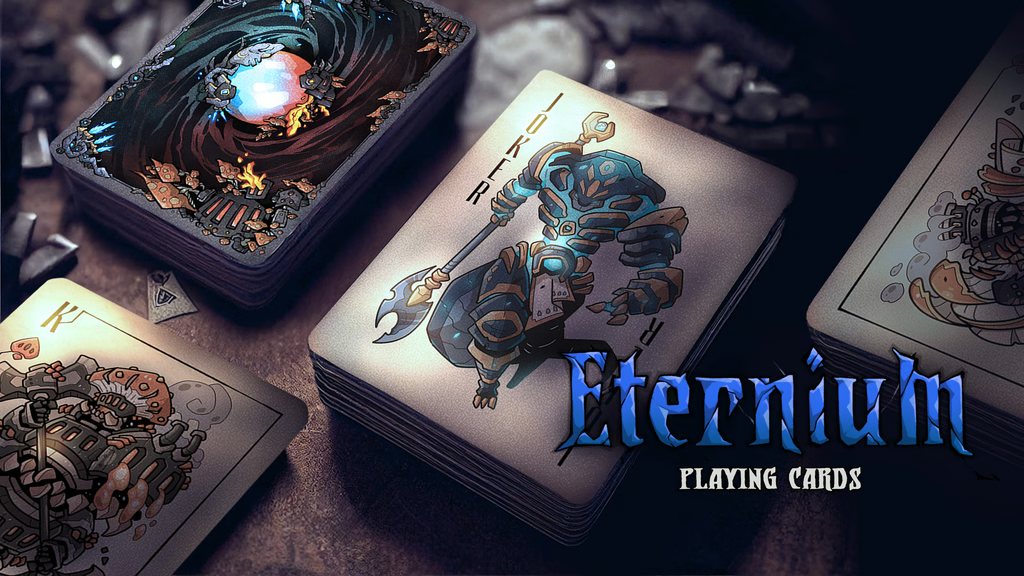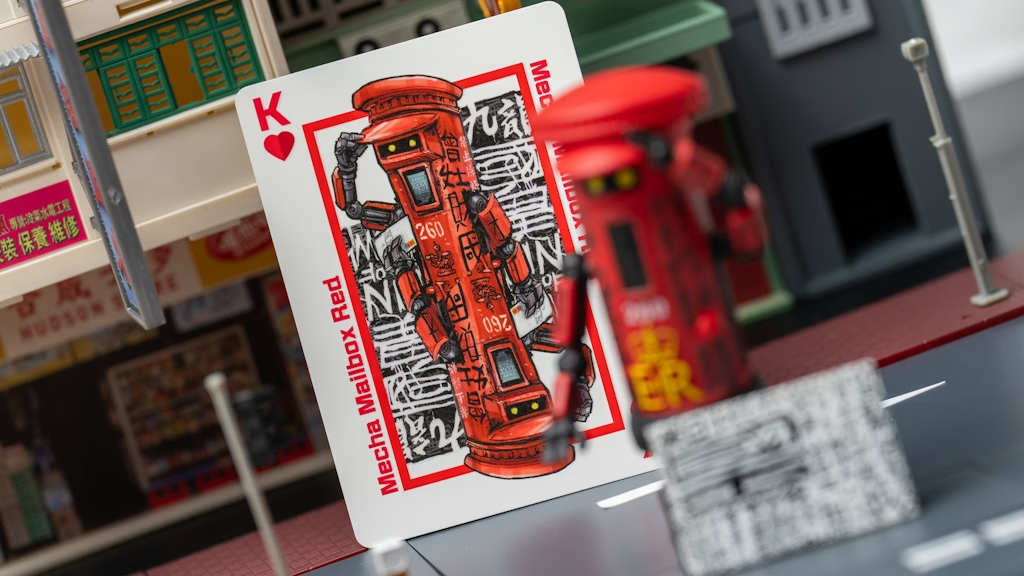Background
UKIYO 浮世 2099
Drawing inspiration from the legends and myths that have shaped Japan, this deck reimagines historical figures and mythical creatures in a bold, futuristic setting full of powerful Mechas and glowing neons. Get ready to explore a world where the past and future intertwine, with every card inviting you into the epic and mysterious stories of Japan like you’ve never seen them before.
- UKIYO 浮世
It can be translated as the “floating world” or “transient world.”
In Japanese mythology, 浮世 refers to the impermanent nature of human existence, likening life to a transient journey filled with fleeting pleasures and sorrows. This concept is deeply rooted in Buddhist philosophy, particularly the idea of impermanence (mujō), which emphasizes the ever-changing nature of existence.
During the Edo period, 浮世 became associated with the urban culture of the time, particularly the world of entertainment, arts, and pleasure-seeking pursuits. This era saw the rise of kabuki theater, ukiyo-e woodblock prints, and the flourishing of the pleasure quarters, such as the famous Yoshiwara district in Edo (modern-day Tokyo).
Ukiyo-e artists depicted scenes from everyday life, landscapes, and portraits of actors and courtesans, capturing the essence of the transient beauty and pleasures of the floating world. These artworks often portrayed themes of love, desire, beauty, and the passage of time, reflecting the ethos of 浮世.
Overall, the concept of 浮世 in Japanese mythology and culture underscores the ephemeral nature of human existence and the pursuit of enjoyment and beauty amid life’s transience.
- YAMI 闇
In Japanese mythology and culture, “闇” (Yami) refers to darkness or the realm of shadows. This concept has deep symbolic and mythological significance, often representing various aspects of the human condition, the natural world, and spiritual realms.
1. Mythological Context: In Japanese mythology, Yami is sometimes associated with the underworld or the realm of the dead. It is often depicted as a place of mystery, where spirits reside and where the boundaries between the living and the dead blur. In Shintoism, the indigenous religion of Japan, Yami may also be connected with kami (spirits or gods) associated with darkness, night, or death.
2. Symbolism of Darkness: Yami is not solely associated with literal darkness but also carries symbolic meanings. It can represent the unknown, fear, mystery, and the subconscious mind. In Japanese culture, darkness is not always seen as negative but is also associated with introspection, meditation, and the potential for spiritual enlightenment.
3. Balance and Harmony: In the traditional Japanese worldview, there is often a belief in the balance between light and darkness, day and night, life and death. Yami is seen as an essential counterpart to light (Hikari), and both are necessary for the balance and harmony of the universe. This balance is reflected in various aspects of Japanese culture, including art, literature, and philosophy.
4. Folklore and Folk Beliefs: Yami features prominently in Japanese folklore and folk beliefs. Stories and legends often involve encounters with supernatural beings or creatures that dwell in darkness, such as yokai (folk monsters) or yurei (ghosts). These tales serve to explain natural phenomena, teach moral lessons, or explore the human psyche.
5. Contemporary Interpretations: In modern times, the concept of Yami continues to influence various aspects of Japanese popular culture, including literature, manga, anime, and video games. It is often used to create atmosphere, evoke emotions, and explore themes of mystery, danger, and the unknown.
Overall, the concept of Yami in Japanese mythology reflects the complex interplay between light and darkness, life and death, and the inherent mysteries of existence. It embodies both fear and fascination, serving as a source of inspiration and contemplation in Japanese culture.
- HIKARI 光
In Japanese mythology and culture, “光” (Hikari) holds significant symbolism and is associated with various themes, including spirituality, enlightenment, purity, and divinity.
1. Divine Light: In Japanese mythology, 光 often represents divine light or the radiance of the gods. It is associated with kami (spirits or gods) and is seen as a symbol of their presence, power, and benevolence. The sun goddess Amaterasu, one of the most important deities in Shintoism, is often depicted as emitting brilliant light, symbolizing her role as the source of light and life.
2. Enlightenment and Wisdom: 光 is also closely linked to the concepts of enlightenment and wisdom. In spiritual traditions such as Buddhism, which has deeply influenced Japanese culture, light symbolizes the illumination of the mind, the dispelling of ignorance, and the attainment of higher consciousness. The Buddha is often depicted with a radiant aura of light surrounding him, symbolizing his enlightened state.
3. Guidance and Protection: 光 is often seen as a guiding force that illuminates the path and offers protection against darkness and evil. In Japanese folklore and mythology, lanterns, torches, and other sources of light are used to ward off malevolent spirits and bring blessings to people's lives. Light is also associated with purity and cleansing, both physically and spiritually.
4. Natural Phenomena: The natural world also plays a role in the symbolism of 光. The rising sun, with its warm and gentle light, is a powerful symbol in Japanese culture, representing the beginning of a new day, hope, and renewal. Sunrises and sunsets are often depicted in art and literature, evoking a sense of beauty, tranquility, and spiritual significance.
5. Metaphorical Meanings: Beyond its literal and spiritual associations, 光 is often used metaphorically in Japanese culture to represent positive qualities such as clarity, truth, and inspiration. It is commonly used in expressions and idioms to convey ideas of enlightenment, optimism, and goodness.
Overall, the concept of 光 in Japanese mythology embodies a profound reverence for light as a symbol of divine presence, spiritual awakening, and the inherent goodness of the universe. It permeates various aspects of Japanese culture, from religious beliefs to everyday expressions, reflecting the deep appreciation for the beauty and power of light.
KardecK
As a team of passionate card enthusiasts, our mission is to create card games with unique and original themes that spark curiosity in everyone, especially those who share our passion.
You might know KardecK from previous playing cards projects such as:
The offer
The offer consists of two different decks: 闇 (Yami) and 光 (Hikari).
闇 (Yami)
The front Tuck boasts a detailed Mecha Dragon, armed with futuristic armor and intricate cables, while the back unveils a cyberpunk Samurai robot, fully equipped with tech-enhanced armor and a cutting-edge helmet.
Crafted to create a striking 3D illusion, these figures appear to spring to life, merging the ancient with the ultra-modern of Japanese aesthetic.




光 (Hikari)
The front Tuck boasts a detailed Mecha Dragon, armed with futuristic armor and intricate cables, while the back unveils a cyberpunk Samurai robot, fully equipped with tech-enhanced armor and a cutting-edge helmet.
Crafted to create a striking 3D illusion, these figures appear to spring to life, merging the ancient with the ultra-modern of Japanese aesthetic.




For more images check our gallery.
Pricing
| Option | Price (EUR) |
|---|---|
| One deck | 23.00 |
| 1 set (1 Yami + 1 Hikari) | 38.00 |
| 2 sets (2 Yami + 2 Hikari) | 69.00 |
| 3 sets (3 Yami + 3 Hikari) | 99.00 |
| 6 sets (6 Yami + 6 Hikari) | 189.00 |
| 12 sets (12 Yami + 12 Hikari) | 299.00 |















